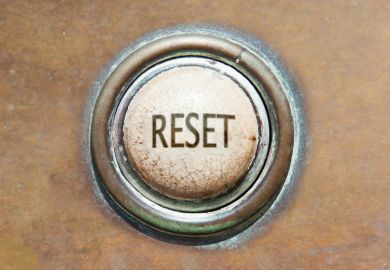The Philippines sits on the so-called Ring of Fire, a 25,000-mile-long horseshoe of tectonic activity at the edges of the Pacific Ocean. Roughly 90 per cent of earthquakes globally occur on this fault line.
As if that weren’t enough, the archipelago is also located along the Pacific typhoon belt. At the time of writing, six typhoons had hit the Philippines so far during November – the most active November on record.
It is little wonder that the Philippines topped the 2024 World Risk Index, which measures not just the countries most likely to be hit by natural disasters and extreme weather events, but also takes into account how effectively a society is protected from and prepared to respond to these.
Five other Asian countries feature in the top 10 – Indonesia, India, Myanmar, Bangladesh and China – while other areas of vulnerability are generally concentrated in the Americas and Africa.
Despite these trends, the bulk of the research into natural disasters doesn’t necessarily take place in the areas most affected by these often-tragic events. In a 2017 analysis, publisher Elsevier found that more research into disaster science happens in richer countries, with some disaster-prone nations not producing any at all. The study found this can create a “disconnect”, with research failing to address the needs of the countries hardest hit.
Scientists in countries such as the Philippines are trying hard to buck this trend.
“We really have a very big problem, especially with climate change, wherein the predictions would be that cyclones will become more powerful, the rains will become heavier, there will be more frequent floods, widespread landslides,” said Mahar Lagmay, executive director of the Resilience Institute at the University of the Philippines.
“The university has to do something about it, not just to mitigate or to reduce the emissions of greenhouse gases, but also to help communities plan their development.”
The institute focuses on all parts of the disaster management cycle, including prevention, recovery and response. Professor Lagmay also heads Project Noah (Nationwide Operational Assessment of Hazards) – originally a government programme that maps out natural hazards across the country, giving communities information and advice on the risks in their areas.
Professor Lagmay believes education is one of the most important parts of his job. “If the people don’t embrace the science, then the science will be useless,” he said.
As well as one-way communication, the institute also encourages citizen science, such as through its flood modelling validation programme. People can send in images from their area to report floods, which are used to authenticate the institute’s models and help shape future predictions.
Some institutes doing similar work in the region are born from disaster, such as the Tsunami and Disaster Mitigation Research Center (TDMRC) at Indonesia’s Syiah Kuala University.
The university is located in Banda Aceh, a city close to the epicentre of the 2004 Indian Ocean earthquake – a seismic event which led to the Boxing Day Tsunami that killed more than 200,000 people.
“The tsunami caused tremendous losses to our community,” said Syamsidik, director of TDMRC. “We lost hundreds of staff due to the impact of the tsunami and more than 1,500 students died.”
The institute was set up two years afterwards to study the disaster and work on future responses. “The event should be a lesson learned for others, not only for us in Aceh but also other parts of the world,” Professor Syamsidik said.
Twenty years on from the disaster, the institute is now a leading publisher of scientific papers on tsunami and holds regular international conferences, inviting academics from around the world to the site of the disaster.
However, Professor Syamsidik agreed that one of the hardest parts of his job was sharing research not just with the academic world, but with the local population.
Shinichi Kuriyama, a professor at Tohoku University’s International Research Institute of Disaster Science – established after the 2011 East Japan earthquake and tsunami – said that public engagement can often be short term.
“After a huge disaster, people are interested and act, but after a while, people gradually forget about it and their interest and action decreases,” he said. “At such times, huge disasters often occur, so ensuring the continuity of interest in disaster prevention is also one of the difficulties.”
When they succeed, these institutes can have a huge impact. In the Philippines, counterfactual modelling suggests that the potentially fatal impact of at least eight disasters between 2012 and 2015, most of them floods, were mostly averted thanks to projects such as Noah, with very few deaths compared to the thousands who died in similar incidents before the work started.
However, they cannot mitigate all disasters. Professor Lagmay recently visited a community in the Philippines that had been buried by a landslide. “I smelled again the stench of death,” he said.
“I’ve seen a lot of dead people and their faces, and I know that these people who have died don’t have a voice any more.
“We want to speak for those who cannot speak up anymore and we want to use the science to improve things, to learn from the mistakes – not to repeat the same mistakes – and do it the next time around better.”





